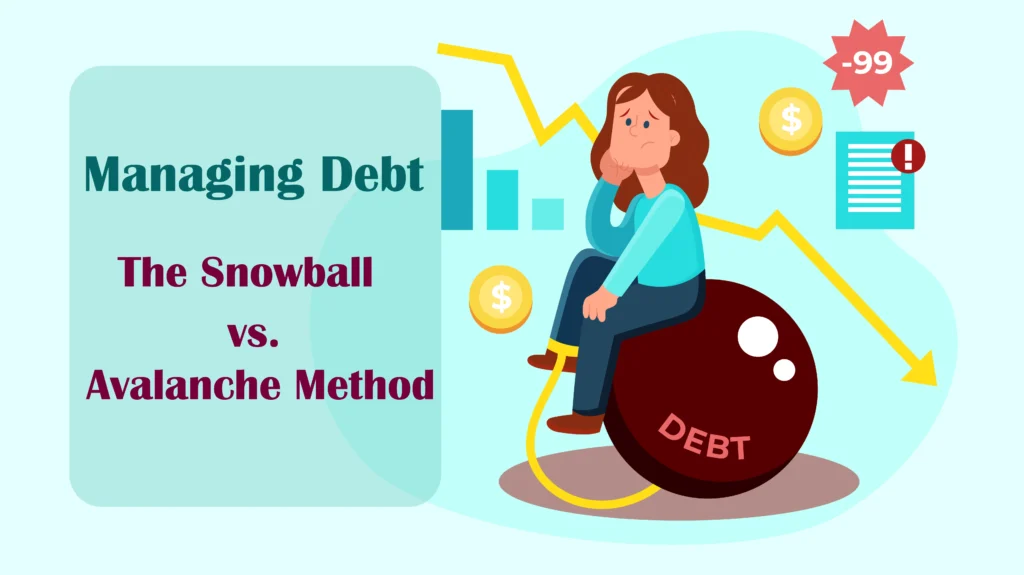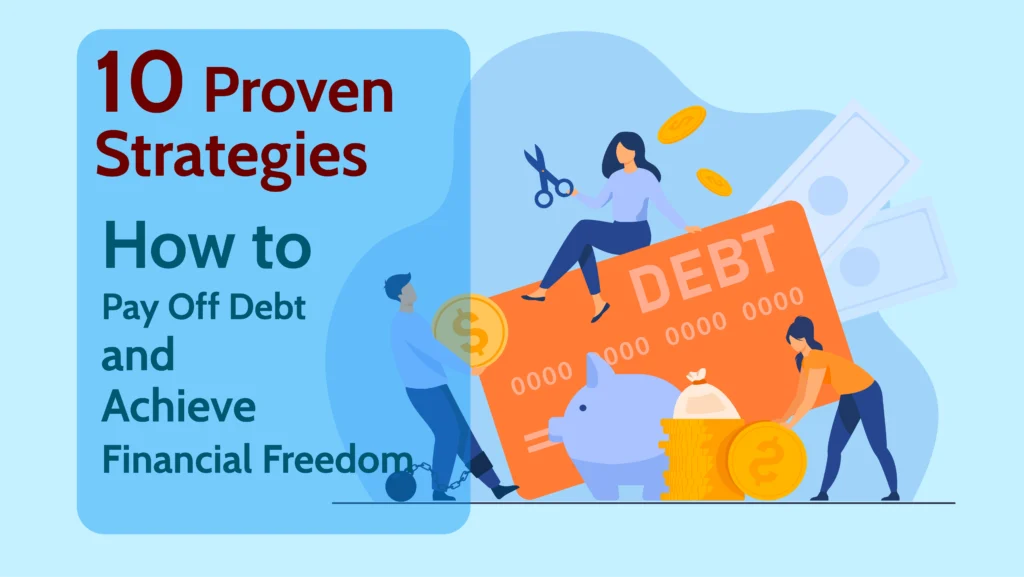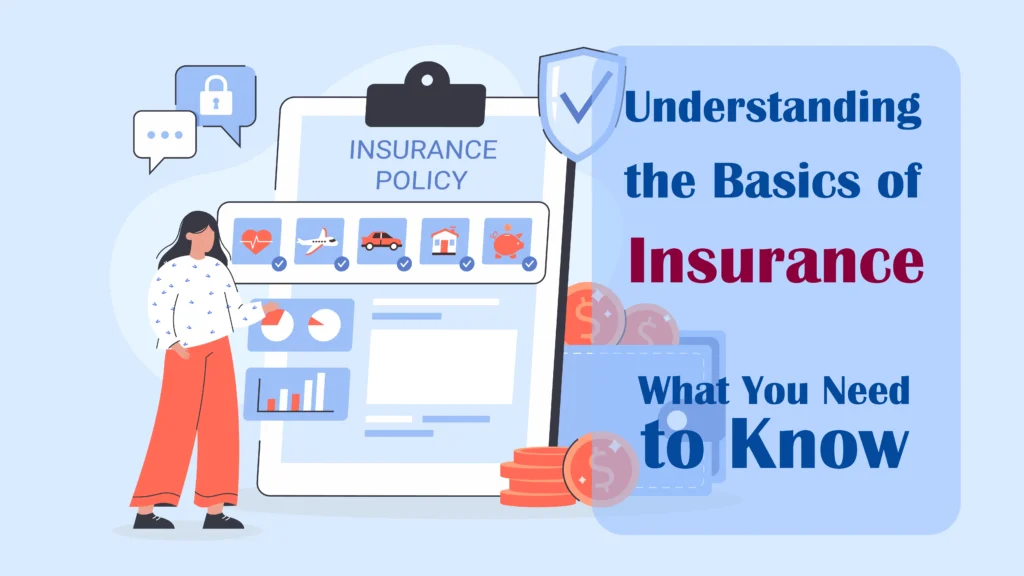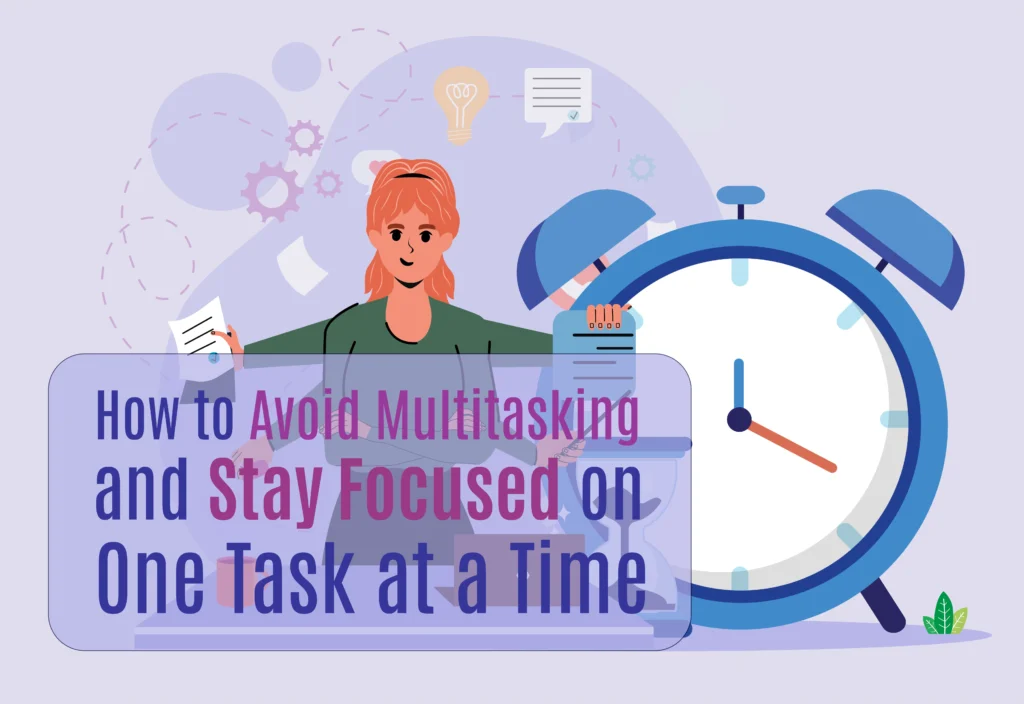Which Debts to Pay Off First: A Guide to Smart Debt Prioritization
Deciding which debts to pay off first can feel overwhelming, especially when dealing with multiple types of debt. While it may seem tempting to focus on smaller balances for quick wins, paying off high-interest debts first is often the smartest financial move. Debts like credit cards and personal loans usually carry high interest rates that compound quickly, making balances harder to reduce over time. By prioritizing these high-interest debts, you’re not only lowering your financial burden faster but also saving hundreds—or even thousands—of dollars in interest in the long run.
Once high-interest debts are under control, consider tackling secured debts such as car loans or mortgages. While these typically have lower interest rates, missing payments can have serious consequences, such as repossession or foreclosure. Paying off these debts sooner can provide peace of mind, protect valuable assets, and free up funds for other financial goals. Understanding how to prioritize each debt type gives you the power to optimize your payments, reduce stress, and get on the path to financial stability with a solid, clear strategy.

Understanding Your Debt Types
To effectively manage your debt, you need to first understand the different types of debt you may be carrying. Each debt type affects your finances differently and should be approached accordingly. The key distinctions involve whether the debt is secured or unsecured, high or low interest, and whether it’s revolving or installment-based.
Secured vs. Unsecured Debt
There are two main categories of debt: secured debt and unsecured debt.
- Secured debt is backed by collateral, which means the lender has the right to seize the asset if you fail to repay the loan. For example, if you take out a mortgage and fall behind on payments, the bank can foreclose on your home. Similarly, if you default on an auto loan, the lender can repossess your car. Because these debts are tied to valuable assets, they typically come with lower interest rates compared to unsecured debt.
- Unsecured debt, on the other hand, is not backed by any collateral. This includes credit cards, medical bills, and personal loans. If you default on unsecured debt, lenders can take legal action to recover what’s owed, but they cannot directly seize your property. Unsecured debt often carries higher interest rates because it poses more risk to the lender.
High-Interest vs. Low-Interest Debt
Another essential distinction when it comes to debt prioritization is interest rate. High-interest debt can quickly spiral out of control, as the interest charges accumulate and increase the amount you owe over time.
- High-interest debt: This typically includes credit card balances and payday loans, which can have interest rates as high as 25% to 30% or more. These debts should be addressed as soon as possible, as they cost the most to carry over time.
- Low-interest debt: Student loans, mortgages, and some car loans usually come with lower interest rates. These debts are often easier to manage and can be paid off over a longer period without accruing substantial interest.
Revolving vs. Installment Debt
There are also differences between revolving debt and installment debt in terms of repayment structure.
- Revolving debt is credit that you can borrow from repeatedly, up to a set limit, and pay off over time. Credit cards are the most common example of revolving debt. While you only need to make minimum payments each month, this type of debt can become dangerous if not managed well, as balances can accumulate quickly.
- Installment debt, such as a mortgage or car loan, involves borrowing a set amount of money and repaying it in fixed monthly installments over a specified period. Once the loan is paid off, the debt is settled. Installment loans generally offer more predictability in terms of repayment, but they can also come with hefty interest over the long term if they aren’t prioritized correctly.
Understanding these different debt structures helps you decide which to prioritize first. Generally, high-interest, unsecured revolving debt should be tackled before low-interest, secured installment debt, but personal circumstances also matter.
Why Prioritizing Debt Repayment Matters
There are many reasons why prioritizing debt repayment is essential to your financial health. Beyond reducing the amount of interest you pay, having a structured approach to debt repayment can reduce stress, improve your credit score, and help you regain control of your finances.
Saving Money on Interest
The most immediate benefit of prioritizing debt repayment is the potential to save money on interest. High-interest debts like credit cards and payday loans compound daily or monthly, meaning the longer you take to pay them off, the more you’ll owe in interest. By focusing on high-interest debt first, you reduce the total interest paid over the life of the loan.
Consider this example: If you have a $5,000 credit card balance with a 20% interest rate and you only make the minimum payment each month, it could take years to pay off and cost you thousands of dollars in interest. By paying it off aggressively, you can avoid these additional costs and free up money for other financial priorities.
Reducing Financial Stress
Debt can be emotionally overwhelming, especially when you have several different balances to keep track of. Prioritizing debt repayment helps to simplify your finances and provides a clear path forward. As you pay down your debt, your financial situation becomes less stressful, allowing you to focus on other goals, such as saving for the future or investing in your retirement.
Reducing debt also provides peace of mind. Knowing that you’re making progress can alleviate anxiety and help you feel more in control of your financial future.
Building Credit
Paying off debt strategically can also help you build your credit score, particularly if you focus on paying down revolving debt like credit cards. One of the key factors that influence your credit score is your credit utilization ratio—the amount of credit you’re using compared to your total available credit. Reducing your credit card balances improves this ratio, which can lead to a higher credit score.
A higher credit score opens the door to better financial opportunities, such as qualifying for lower interest rates on future loans or securing a mortgage with more favorable terms.
Assessing Your Financial Situation
Before deciding which debts to prioritize, you need to assess your overall financial situation. This step will give you a clearer idea of how much money you can allocate toward debt repayment each month and help you develop a realistic strategy.
List All Your Debts
Start by making a list of all your debts. Include the following details for each one:
- Total balance owed
- Interest rate
- Minimum monthly payment
- Payment due date
- Loan term (if applicable)
Organizing this information in one place gives you a clear snapshot of your debt situation. You’ll be able to see which debts are costing you the most in interest and which are smaller balances you can pay off quickly.
Evaluate Your Budget
Next, take a look at your budget to determine how much money you can put toward debt repayment each month. Start by calculating your monthly income, then subtract all necessary expenses like rent or mortgage, utilities, groceries, and transportation. Once you’ve accounted for your basic living expenses, see how much is left over to apply toward your debts.
If possible, try to find areas where you can cut back on non-essential spending, like dining out, subscriptions, or entertainment, to free up more money for debt repayment.
Identify Financial Goals
Your financial goals should play a key role in shaping your debt repayment strategy. For example, if you’re looking to buy a home in the near future, focusing on improving your credit score by paying down credit card debt may be a priority. Alternatively, if your goal is to become debt-free as quickly as possible, focusing on high-interest debts first might make more sense.
Having clearly defined financial goals helps you stay motivated and ensures that your debt repayment plan aligns with your long-term objectives.
Methods to Prioritize Debt Repayment
Now that you have a clear understanding of your debt and financial situation, it’s time to choose a repayment method. There are several popular strategies for prioritizing debt repayment, each with its own advantages.
The Debt Avalanche Method
The Debt Avalanche Method focuses on paying off debts with the highest interest rates first. This approach minimizes the total amount of interest you pay over time, which can help you save money in the long run.
Here’s how the Debt Avalanche Method works:
- Make minimum payments on all your debts.
- Allocate any extra money to the debt with the highest interest rate.
- Once the highest-interest debt is paid off, move on to the next highest-interest debt.
This method is ideal for those who want to pay as little interest as possible and get out of debt faster.
Pros of the Debt Avalanche Method:
- Saves the most money on interest over time.
- Helps you pay off debt more efficiently.
Cons of the Debt Avalanche Method:
- Progress may feel slow at first if the highest-interest debt has a large balance, which can be discouraging.
The Debt Snowball Method
The Debt Snowball Method is a popular alternative that focuses on paying off small balances first, regardless of interest rates. This method is more about building momentum and motivation through quick wins.
Here’s how the Debt Snowball Method works:
- Make minimum payments on all your debts.
- Put any extra money toward the debt with the smallest balance.
- Once the smallest debt is paid off, move on to the next smallest balance.
This method is perfect for those who need a psychological boost to stay motivated on their debt repayment journey.
Pros of the Debt Snowball Method:
- Builds momentum by offering quick wins.
- Boosts motivation as you see progress early on.
Cons of the Debt Snowball Method:
- You may pay more in interest over time compared to the Debt Avalanche method.
The Hybrid Approach
For some people, a Hybrid Approach that combines elements of both the Debt Avalanche and Debt Snowball methods works best. You might start by paying off a few small balances (Snowball) to build confidence, then switch to the highest-interest debts (Avalanche) to save money on interest.
This flexible approach allows you to balance financial savings with emotional satisfaction, ensuring that you stay motivated while also minimizing interest costs.
≫ Related Post: Managing Debt: The Snowball vs. Avalanche Method
Factors to Consider When Prioritizing Debt
While interest rates and balances are important, they’re not the only factors to consider when prioritizing your debts. Personal circumstances and financial goals should also play a role in shaping your strategy.
Interest Rates
As mentioned earlier, high-interest debts should generally be your top priority because they cost you the most over time. Even if a low-balance debt seems manageable, it’s often better to focus on the debt that’s accruing the most interest to save money in the long run.
Loan Terms
The loan term (or repayment period) is another factor to consider. Short-term loans with large monthly payments may need to be prioritized to free up cash flow, while long-term, low-interest debts like mortgages can often take a backseat in your repayment plan.
Emotional Motivation
Debt can take a psychological toll, so for some people, the emotional motivation of paying off a small debt can be a powerful driver. If carrying multiple small debts is overwhelming, paying them off quickly using the Debt Snowball method might be the best option.
Tax-Deductible Debt
Some debts, like student loans and mortgages, offer tax benefits. For instance, interest on student loans and mortgages may be tax-deductible, which can make them less urgent to pay off compared to high-interest, non-deductible debt like credit cards.
Secured Debt Risks
With secured debt, such as a mortgage or car loan, you risk losing the asset if you fall behind on payments. For this reason, secured debts should generally be prioritized to avoid foreclosure or repossession. Losing a home or vehicle can have serious long-term consequences on your financial health, making these debts a high priority.
Mistakes to Avoid When Paying Off Debt
When paying off debt, it’s important to avoid certain pitfalls that can hinder your progress or even worsen your financial situation.
Neglecting Emergency Savings
One common mistake is to focus so heavily on paying off debt that you neglect building an emergency fund. Without savings, any unexpected expense—such as a medical emergency or car repair—could force you to rely on credit cards or loans, sending you back into debt.
Aim to build an emergency fund of at least $500 to $1,000 before aggressively tackling your debt. This will provide a financial cushion and help you avoid debt relapse.
Taking on New Debt While Paying Off Old Debt
It’s also important to avoid taking on new debt while paying off existing debt. Applying for new credit cards, personal loans, or financing new purchases can undo your progress and make it harder to stay on track. Focus on paying down your current balances before taking on new financial obligations.
Focusing on Multiple Debts Equally
Spreading your payments evenly across all debts might seem like a fair approach, but it’s usually not the most effective. By focusing on one debt at a time and putting extra money toward it, you’ll pay it off faster and free up funds to tackle the next debt.
Prioritizing one debt allows you to see progress more quickly, which can motivate you to stick to your plan.
How to Stay Motivated During Debt Repayment
Paying off debt can take months, or even years, depending on your financial situation. Staying motivated throughout the process is essential for long-term success.
Celebrate Small Wins
Each time you pay off a debt—no matter how small—take time to celebrate your progress. These small wins remind you that you’re moving in the right direction and help you stay motivated as you work toward larger financial goals.
Track Your Progress
Use debt-tracking tools, such as apps or spreadsheets, to monitor your progress over time. Seeing your balances decrease and the number of debts dwindle provides a visual reminder of how far you’ve come.
Popular debt-tracking apps include Undebt.it, You Need a Budget (YNAB), and Mint. These tools help you set goals, track payments, and stay on course.
Stay Focused on Long-Term Goals
Visualize what your life will look like once you’re debt-free. Whether it’s owning a home, traveling, or saving for retirement, keeping your long-term goals in mind will help you push through the tough moments in your debt repayment journey. The sense of freedom that comes with being debt-free is worth the effort it takes to get there.
Reevaluate and Adjust Your Strategy
As life changes, so too should your debt repayment strategy. Periodically reassess your financial situation and adjust your approach as needed.
Increase Payments When Possible
Whenever you come into extra income—such as a tax refund, bonus, or raise—consider putting that money toward your debt. Increasing your payments when possible helps you pay off your debt faster and reduces the overall interest you pay.
Adjust for Life Changes
Major life events, such as a job loss, marriage, or starting a family, can impact your financial priorities. If your circumstances change, don’t hesitate to reevaluate your debt repayment strategy. Be flexible and adjust your plan to ensure it aligns with your current financial goals.
Conclusion: Prioritizing Debt for Financial Freedom
Paying off debt requires patience, discipline, and a clear plan. By understanding your debts, assessing your financial situation, and choosing the right repayment method—whether the Debt Avalanche, Debt Snowball, or a Hybrid Approach—you can make steady progress toward financial freedom.
Prioritizing debt repayment not only saves you money on interest but also reduces financial stress and improves your credit score. Stay consistent, avoid common mistakes, and keep your long-term goals in focus. With dedication, you can pay off your debts, gain financial independence, and create a more secure future.
















